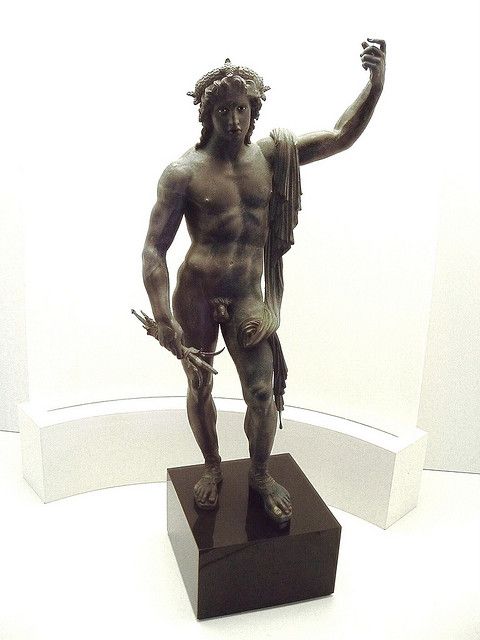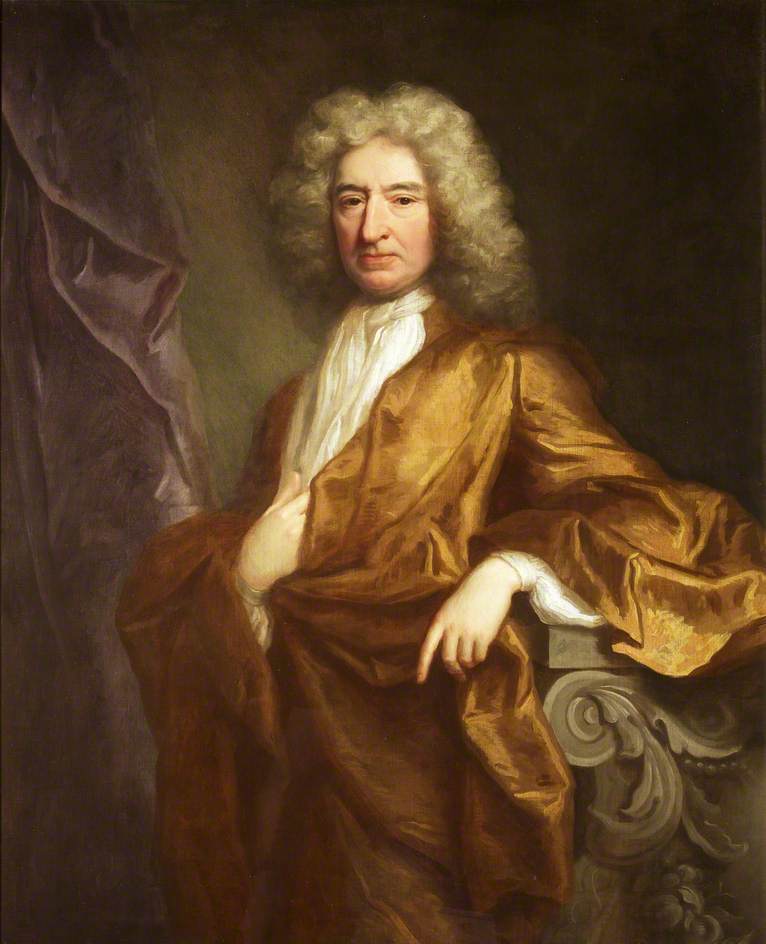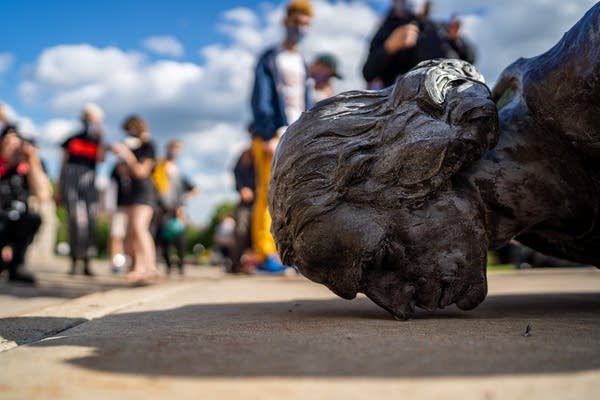
The recent attention to the pulling down of statues of those whose history has fallen short of modern expectations has a long magical tradition.
In Ancient Times statues had a magical function. They were supposed to represent either Gods or Heroes looking down on society and protecting it. Sometimes they were used as a focal point for a god at a particular site. In other times a statue was erected to a dead human “hero” to appease them.
In Egypt, the Hermetica (and repeated by Iamblicus) statues were used by magicians to communicate directly with the dead or Gods. They were doorways between the worlds, and the statues could speak.
But statues were often destroyed or buried because they were not doing their job or that the person was deemed to have committed crimes, so that modern people (usually the rulers) did not want them hanging around anymore. Normally statues were disfigured by having their nose (access to breath) and mouths chiselled off. In other times they were buried.
Gods who failed to do their job went the same way.
One of the most charged statues in Rome is that of who received the “soul” of a goat as an offering. He was a god of healing and was supposed to stop plagues. But one day, the Romans decided he failed as a God and pulled him from his temple and buried him. In modern times, Vejovis’s statue was dug up again and placed in a Roman museum. Ancient Greeks buried Apollo’s statues to ward off plague or if he failed to stop one.
Newer statues of heroes appear after the rise of Christianity, and they were usually symbolic, in that they were acknowledging that the image of this person was important after their deaths for future generations to see and respect. But recent events have shown that in humanity’s unconscious, the old rules still apply.
Colston

The people of Bristol erected a statue to merchant Edward Colston it was an acknowledgement that he poured a lot of cash into charity work in Bristol. At the time no-one cared that Colston’s money came from slavery and his company transported more than 84,000 African men, women and children to the Caribbean and the rest of the Americas, of whom 19,000 died on their journey. To the people of Bristol, he was a hero.
In the 21st century, we no longer turn a blind eye to slavery. We might accept some “sins” that people had historically, but slavery is a deal killer. Colston is no longer a hero and no longer deserves to be revered as one. Removing the statue is not causing people to forget history; in fact, the statue will end up in a museum, because we write history down. We will always know that
Edward Colston existed, and we will see him in history books giving money to the poor while earning that money kidnapping and selling black people.
The statue situation in the US is slightly different. In the 1950s and 1960s, statues of Confederate heroes were erected as symbols of white rule. They were a direct response to the black civil rights movement and were effective magically invoking the dead spirits and making them heroes to keep blacks in check.
American history is always one where legend and spin are more important than reality, and the South kept the image of the Confederacy alive mostly to justify segregation. In this false religion, these racist, slave owners, were heroes. Putting statues of these heroes was telling the descendants of slaves to “keep their place” and “know who their boss is.” It is not surprising then that such black magic statues have to be pulled down.
What I find useful from this experience is that the statue issue has awoken a re-evaluation of other heroes and our acceptance of them.
Pike

The much over-quoted Albert Pike who is seen as an American masonic hero but in real life was a confederate, racist, war criminal who encouraged his soldiers to scalp people. Not was he a traitor to both sides to the war, but he might have helped found the KKK (a form of masons for those without opposable thumbs). So his statue should not be seen outside the masonic lodges (where he can still be a hero) but to the rest of the world, he was a generally disgusting human being.
Even the revolutionary heroes such as George Washington (who wore dentures made from a teeth pulled from a black slave), Thomas Jefferson (slave owner) and Benjamin Franklyn are being re-evaluated to a greater or lesser degree. Centuries of spin that Disney and other US historians have made turning these people into saints will probably prevent too much dirt ever sticking, but it is time the US looked at the revolutionary war and see if it delivered on its promises.
Another statue getting a lot of attention is Winston Churchill, who is a hero to the English for seeing Hitler coming and being a great leader in a time of need. But had Churchill died before WW2, he would have been widely hated as a historical figure. While a colonial war hero and critical of the way wars were handled, most of his actions were self-glorification. This arrogance led to the death of thousands of ANZACs at the battle of Gallipoli by thinking his Royal Navy could save the day and effectively tipping the Turks off that the raid was happening.
An aristocrat, Churchill was anti-union, anti-votes for women and a racist. He was surprisingly not anti-fascist and was continually trying to get a deal with Mussolini and Franco to abandon Hitler. Like many British aristocrats believed Hitler was ok until he started threatening the British Empire. He also made decisions which would result in the deaths of many Indians by starvation, and he also turned on the Greek freedom fighters fighting Hitler because he feared that they would go Russian after the war. While I can see why Churchill was a hero to middle England, he was not a hero to everyone, and I can see why his statue would be targeted.
The point of this is that the removal of statues and the re-evaluation of historical figures is an integral part of development. In some cases, particularly in the case of actual criminals such as King Leopold of Belgium, they need to go because we can no longer worship people who committed such atrocities as heroes. We need heroes for our age to fulfill that role.

As a Southerner who is not sympathetic to my Confederate ancestors, I want to say: spot on. I think most statues were put up earlier in the 20th century (1900s to 1930s) to reinforce Jim Crow, but that\’s six of one, half a dozen of the other; same motives. I did nt think about the black magic aspect but that is exactly what it is. Sharing.
Good Article, and I believe if it is done democratically then it is fine, rather than the wanton attacks on random statues by masked perpetrators.
About Pike though, he fought for the rights of at least 8 Native American Indian tribes, I would like to research your sources that claim he was in the kkk and that he was a racist…maybe he was, but lets see the sources so we can research rather than merely go by the fact he was a confederate officer for a short time. He was definitely masonic, spot on there. Still a good article by you though…
It is mentioned by Dr. Walter L. Fleming, Civil War and Reconstruction in Alabama; New York: Columbia University Press; Ku Klux Klan, its Origin, Growth and Disbandment. New York: Neale Pub. Co. 1905; and Susan Lawrence Davis’s 1924 Authentic History, Ku Klux Klan, 1865-1877, and includes testimony from original members how KKK Tribunal Law and rituals of initiates into the KKK was given to them by 33 Degree, Master Mason, Albert Pike; joined by other distinguished 33 degree, Master Masons, in being strategists and stewards of the KKK. Pike wrote an editorial in support of them once in which he said the ideas were good, but the group lacked organisation and would come to nothing it might have been that he became involved later.
Oddly the Wackypedia page on the statue covers Pike quite well https://en.wikipedia.org/wiki/Statue_of_Albert_Pike It does not mention how nasty his racism went and dismisses the KKK link. I found a letter from him to his brother where he said: “I am not inclined to mettle in the matter [ie allow black people to join the masons]. I took my obligations to white men, not to Negroes. When I have to accept Negroes as brothers or leave Masonry, I shall leave it.”
It is of course legitimate to attack the statues of racists, but there is also a peculiar tendency which targets progressive figures like Abraham Lincoln. I recommend reading these articles about what might be behind that seemingly mindless tendency:
https://www.wsws.org/en/articles/2020/06/25/pers-j24.html
https://www.wsws.org/en/articles/2020/06/22/pers-j22.html
https://www.wsws.org/en/articles/2020/07/03/linc-j03.html
Well it depends on the country.
In my country Vlad the Impaler killed a lot of Turks.
Also resisting foreign imperial rule weather it was Turkish, Russian or Austro-Hungarian is part of our identity as a people.
So yeah… his statue stays.